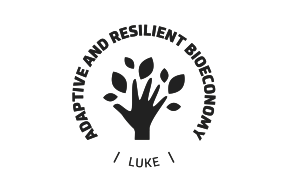Assessing the economics of biodiversity in Finland: National implications of the Dasgupta Review
Humanity's wealth has grown at the expense of nature. Exceeding nature's carrying capacity will lead to a decrease in our well-being, because the ecosystem services provided by nature will not be maintained and will not be sufficient to satisfy our needs at the current level of consumption. A wide-ranging report coordinated by the Natural Resources Institute Finland (Luke) reveals what the groundbreaking Dasgupta report and the ten options for change (OC) defined by Sir Partha Dasgupta mean for Finland.
The key message of the Dasgupta Review is that our demand for goods and services exceeds nature’s capacity to supply them in the long term, as nature’s worth to society is not reflected in market prices. A scientific panel coordinated by Luke found out what the ten options for change concretely mean in Finland. The report is a work commissioned by the Finnish Ministry of Environment.
Finland must be a part of international processes
The key policy implication is that all options for change presented in the Dasgupta review are applicable in Finland and there are numerous policy alternatives to target the biodiversity loss.
“National actions are needed while at the same time it is important to actively participate in international co-operation. All actors in society need to undertake actions. It is important to enhance policy measures, even with imperfect information,” says Research Professor Eija Pouta from Luke.
Options to balance supply and demand
The options for change defined by Dasgupta are assessed from the perspective of Finland: 1) Nature’s supply: Conservation and restoration of ecosystems; 2) Our demand: Changing consumption and production patterns; 3) Trade and supply chains; 4) Pricing environmental damage; 5) Future population; 6) Changing our measures of economic progress; 7) Global public goods; 8) The Global financial system; 9) Empowered citizenship; and 10) Education and biodiversity.
Nature’s supply has traditionally been supported in Finland with conservation areas. In the future, it is necessary to combine different protection and restoration measures, to expand the selection of means, and to increase resources and allocate them more efficiently. This means, for example, more careful consideration of biodiversity loss in land use planning, as well as the introduction of ecosystem service fees (PES) and nature-based solutions.
The food chain provides a clear example of how to affect consumption and production patterns. The ongoing transition to a more plant-based food chain can be enhanced, for example, with investments in product development and in the ability of professionals and citizens to prepare more plant-based meals.
Finland can be more active in trade policy. It is important to support the implementation of a non-discriminatory tax on both imports and domestic commodities based on their assessed biodiversity footprint in the EU. Finland can also initiate national policies and standardization of biodiversity footprint assessments in all organizations, starting from large organizations.
Pricing negative biodiversity externalities by developing new environmental taxes in Finland would require reliably assessing both the local effect of the activity on biodiversity and the local value of biodiversity. The information needs are vast.
In order to reduce the demand for natural resources and protect biodiversity, there is a need for national political will and actions aiming to influence the world's population development. For Finland, the channel for this is development cooperation. Education, women's rights, and the promotion of sexual and reproductive health services play an especially important role.
Finland has participated in pilot projects of environmental and ecosystem accounting. In the future it is important to have a clear mandate to produce the accounts on regular basis with active communication and coordination amongst source data providers, researchers, compilers and data users.
Renewed institutions provide new opportunities
To support the protection of global public goods Finland can utilize the previous experiences of the Baltic and Nordic cooperation for the Arctic nature. “Environmental leader image” supports in co-operation for more stringent and clearer international institutions for biodiversity.
Beyond the active participation in international processes, especially in the European Union, aiming at developing a financial system that takes biodiversity into account, financial markets can also be developed at the national level. Public financiers can require an assessment of the risks, benefits, and opportunities of biodiversity in their funding decisions. In public procurement, biodiversity can be taken into account more strongly than at present.
Finnish citizens are strongly attached with nature and the opportunity to influence is the key to socially sustainable biodiversity protection. Socially acceptable actions and operating models that have proven to be successful are more likely to be implemented. New forms of citizen participation and democratic innovations promote the development and implementation of effective and acceptable operating models.
Biodiversity education is needed at all levels to implement change on long term. Allocating resources locally to biodiversity education and connecting with nature and setting up a national coordination for biodiversity and sustainability education provides a steppingstone to change.
"Even though the global situation looks bleak, it can be influenced," Research Professor Eija Pouta concludes.



